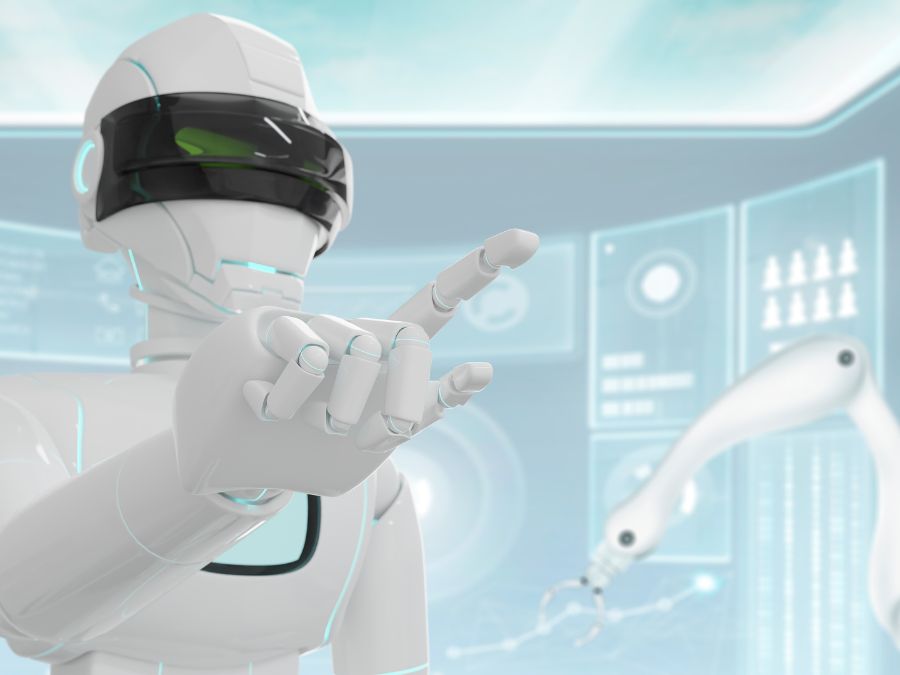The Future of Web Design: Is AI the New Designer?
Imagine baking a cake. If you’re anything like me, you’d think, “Wouldn’t it be cool if we had a magic machine that does it all by itself?” Think of web design as baking a digital cake. Now, here’s the twist: the magic machine might just be Artificial Intelligence. But will it really take over the entire kitchen? Let’s dive in and find out!
Introduction to AI in Web Design
In the expansive universe of digital design, how often have we stumbled upon a website and silently exclaimed, “This just feels right!”? Such a seamless, almost telepathic user experience doesn’t happen by accident. Behind those intuitive interfaces and responsive designs often lies the intricate work of Artificial Intelligence. At its core, AI is a blend of sophisticated algorithms working tirelessly to predict, analyze, and in certain instances, even craft designs that echo with the ever-evolving needs and preferences of users. Let’s journey deeper into how AI is revolutionizing the realm of web design.
Why AI? Understanding the Benefits
At the intersection of design and technology, why would one turn to AI? The reasons are manifold:
- Efficiency: In the race against time, AI emerges as a sprinter, capable of producing myriad designs at a pace unattainable by humans.
- Data Analysis: One of AI’s crowning achievements is its proficiency in data assimilation and interpretation. It can meticulously analyze user behavior, adapting designs in real-time to offer the most relevant user experiences.
- Cost-saving: Although AI might require substantial initial investment, its potential to streamline processes can lead to significant manpower cost reductions in the long term.
The Current Landscape: Embracing AI’s Presence
The age of AI isn’t an impending future; it’s our present. Pioneering platforms like Wix and Shopify have already integrated AI-driven tools to provide a more personalized, user-friendly website building experience. And if you’ve ever interacted with chatbots, you’ve met the offspring of AI – devised to enhance user interaction and ensure instant query resolutions.
Unraveling the Limitations of AI in Design
Yet, for all its prowess, AI isn’t without its Achilles heel:
- Lack of Emotion: Machines, no matter how advanced, operate on logic. The nuanced tapestry of human emotions remains, for the most part, elusive to AI.
- Over-reliance: If we lean too heavily on AI, there’s a looming danger of churning out designs that, while efficient, lack uniqueness, making them feel eerily similar and generic.
Human Touch vs. Machine Precision
The age-old debate resonates even in this digital era. Comparing the warmth of handwritten letters to the efficiency of typed emails aptly captures the essence of this dichotomy. AI, with its analytical prowess, brings unmatched precision to the table. But there’s an intangible magic, an emotional depth, that only the human touch can provide. It’s this confluence of machine accuracy and human creativity that produces truly memorable designs.
Spotlight on Case Studies: AI-driven Designs
Consider the behemoth that is Netflix. Have you ever paused to think about its uncanny knack for recommending shows that align perfectly with your tastes? This isn’t serendipity but AI meticulously working behind the scenes, refining your viewing experience based on your behavior and preferences.
Peering into the Future: Will AI Reign Supreme?
This inevitably leads us to a question that’s both intriguing and daunting. Can AI usurp human designers entirely? While it’s conceivable for AI to dominate certain aspects, it’s improbable for it to completely overshadow human intuition and creativity. The future, most likely, will witness a harmonious amalgamation of human ingenuity complemented by AI’s unparalleled precision.
The Art of Keeping Creativity Alive
Recall the metaphor of the cake. Even if machines could magically conjure up a perfect cake, we’d still yearn to customize it with our chosen flavors and toppings. Analogously, while AI might form the robust base of a design, the intricate embellishments, the personal touches that make a design ‘sing’, will invariably be human.
Delving into Cost Implications of AI Design
AI, for all its promise of long-term cost efficiency, demands a robust initial investment. And as technology is an ever-evolving beast, periodic upgrades become par for the course, incurring additional costs.
In Conclusion
Is the sanctity of web design threatened? At this juncture, it appears secure. AI, with all its grandeur, remains an auxiliary tool, akin to a sous-chef in a gourmet kitchen. The main chef, the visionary behind the culinary masterpieces, remains irreplaceably human. The future beckons with the promise of collaboration, not competition, between man and machine.
FAQs
Does using AI in web design mean eliminating human designers?
Not at all! Think of AI as a tool that assists designers rather than replacing them.
Are AI-designed websites more expensive?
Initially, yes. But over time, as technology becomes more accessible, costs may reduce.
Can I tell if a website is designed using AI?
Not necessarily. The best AI designs seamlessly blend with human-created elements.
Is AI only beneficial for large companies?
No, even small businesses can benefit from AI tools, especially with user experience optimization.
Will AI reduce job opportunities in web design?
While it may change the nature of some jobs, the need for human creativity remains irreplaceable.

